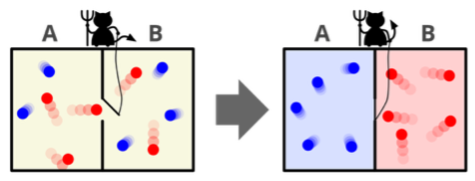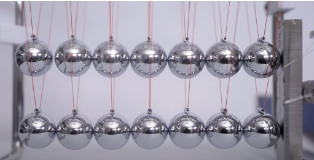IPT Problems 2026
Click here to download the IPT 2026 Problem list in PDF format.
Click here for the mobile-friendly PDF.
If you have any questions about the list, or if you feel that some problems need clarification, please write to us using the contact form. We will publish your questions and our answers below each problem.
Release date: Sept. 11th, 2024.
Last revision: Sept. 11th, 2024.
All the problems, to stimulate a good discussion, have been formulated as open physics questions. That’s why the statement is never too stringent and it is assumed that every phenomenon will be studied both theoretically and experimentally (when possible) with dependence on all the most relevant parameters. More than that, there is not any general understanding of the task condition. If your interpretation of a certain problem condition corresponds to the written one and is interesting enough and your investigation is challenging and broad – the jury members will most likely award you with nice marks. Surely, your team is not expected to spend years on every problem. So you should carefully consider your time budget and choose the most important and interesting parameters to study together with doing your best on both the theoretical model and experimental confirmation.
This year, we continue with the mapping of the IPT problems to the United Nations’ Sustainable Development Goals. We hope it will help our participants to realise and to justify the impact of their work on the IPT problems, and emphasise the continuous commitment of the IPT to education and innovation. See the SDG icons near each problem for the mapping details.
- String Telephone
Build a string telephone without any electronics and analyze the transmission properties (e.g. bandwidth, signal to noise ratio, etc.) of the device. Maximize the distance over which this device allows you to speak. Can you modify the device to make a group call?

- The Life of Beer Foam
Investigate the dynamics of beer foam (or the foam of any equivalent non-alcoholic drink) after pouring. Study and characterize the relevant parameters of the foam evolution. Maximize the lifetime of the foam per unit volume of beer.
- Ping-Pong Balls Cannon
Construct a mechanical cannon (no explosives or compressed gas) capable of launching a ping pong ball a considerable distance without breaking it. Optimize the design to maximize the distance reached by the ping-pong balls. Discuss the distance vs. precision trade-off.
- Periodic Gurgles
Turn an open bottle of water, juice, lemonade, ketchup, or shampoo upside down. Rather than flowing continuously, the liquid comes out in periodic gurgles. Investigate the phenomenon. How do results change if the bottle is tilted?
- Electrostatic Cyclotron
Using a DC voltage source and a plastic ball covered in aluminum foil, build the setup shown in the video. Determine under which conditions the setup can work and maximize the ball’s speed.
https://www.youtube.com/shorts/t6uECHfaxgs
- Maxwell’s Demon
The Maxwell’s demon thought experiment is a famous setup in which one is able to create a temperature differential in an initially thermalized gas by exploiting the information extracted from measurements on the gas particles. There are many versions of the setup that fundamentally show the same thing (e.g. creating a difference in number of particles instead of temperature). By placing a shallow box with small balls inside on a vibrating table one can simulate a confined 2D gas. Implement the Maxwell Demon setup (or one of its cousins) in such a system and optimize the speed and efficiency of the process by which you create the difference in thermodynamic potential. Furthermore, is it possible to turn your device into an engine and use perform work? If so, characterize its power and power fluctuations. Hint: By using balls of different masses one can simulate a gas with different chemical species.

- Double Decker Newton’s Cradle
Make a double decker Newton’s cradle (as in the video) and explain the phenomenon. Optimize the transmission of the kinetic energy between the levels. How does the number of balls per layer change the transmission efficiency?
https://youtu.be/kY2YeM5fNDw

- Eddy Current Engine
Make an Eddy current engine, with an AC voltage source and aluminum discs as in the video. Explain the phenomena, maximize the angular velocity of the discs, and maximize the efficiency of this engine.
https://www.youtube.com/shorts/TVdB5-UKN8s
- Water “Laser”
A shallow water tank mechanically excited by a motor features some of the basic ingredients of a laser (i.e. a cavity and an amplifier). To what extent can this simple analogy capture more complex aspects of laser physics, such as spontaneous and stimulated emission, population inversion, Q switching, and others?
- Dancing Soapy Vortices
When exposed to sound, a soap film shows beautiful dancing color patterns. Under certain conditions, vortices appear on the film surface. Investigate the phenomena. What are the best conditions for them to appear (e.g. sound frequency, incident angle of the sound waves, size of the film, etc.)?
https://www.youtube.com/shorts/j9Y3ansvt0U
- Cosmic Skyscraper Tomography
Radiography is an imaging technique that uses X-rays, gamma rays, or similar ionizing or non-ionizing radiation to view the shape of an object. There also exist many methods of using cosmic rays in tomography of terrestrial objects, such as muography. Develop a similar method that will allow you to determine how many floors are above you in the building where you place the experiment. How does the accuracy of your method depend on the relevant parameters?
- Kinetic Voltmeter
A DIY method of testing the charge of a battery is to drop it on a hard surface and observe whether it bounces. Explain the phenomenon and find other non-invasive mechanical methods to estimate the remaining charge. Optimize the accuracy of your method.
https://www.youtube.com/watch?v=suH32X91sQE
- Rice Holes
If you cook rice without ever stirring it, you will find out that your well-cooked and tasty rice shows a pattern of holes like the one in the picture. Can you suggest a physical explanation for the phenomenon? Identify the relevant parameters.
- Kaleidoscope Tomography br>
A kaleidoscope is an interesting device that uses a set of mirrors to construct fascinating geometric patterns. Using a coherent light source and optical elements on one end, and a camera on the other end, reconstruct the internal structure of the kaleidoscope.
- Singing Water
Several cultures use water as a musical instrument, creating a variety of sounds depending on how the surface of the water is stroked. Explain how the sound is formed and investigate how the properties of the sound depend on the stroke technique.
https://youtu.be/i5ECtJvKd94/
- Singing Flame
It is now well known that flames can travel. However, did you know that they can sing too? They will emit sound if an alternating electrical current passes through them. Explain this phenomenon and identify the relevant parameters. Find a way to record sounds with the flame. Characterize the spectral response function of your device and optimize it to have the highest sound fidelity.
https://www.youtube.com/watch?v=2ZJ8SF3BnNw - Crazy Cylinder
Fill the space between two parallel panels with liquid, then attach two threads to the ends of a heavy circular cylinder and submerge it into the liquid. The cylinder diameter should be slightly smaller than the inter-panel distance. Next, pull the cylinder up, and under some circumstances the cylinder will begin to hit the walls periodically. Explain this phenomenon. Identify the conditions for the oscillations to occur. What is the oscillation frequency and how does it depend on relevant parameters? What changes if the liquid is non-Newtonian?
For the preselection each team must submit a report on one of the following problems: 1. Tin Can Telephone 12. Kinetic Voltmeter and 16. Singing Flame
Countries with national selections may also choose 8. Eddy Current Engine and 17. Crazy Cyclinder.

